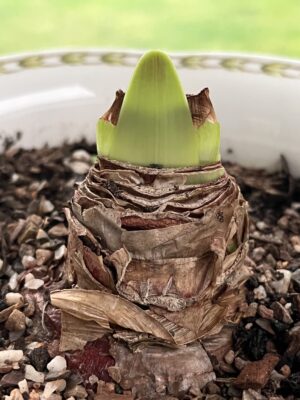Happy New Year! Here’s to fabulous crops, few pests and many pleasurable moments pottering in your Hartley greenhouse. With the wet weather, there is no better place to shelter as you check your plants. If you haven’t done so already, a water butt to collect rainwater from the roof is a ‘must’ and can be used on all of your plants apart from the early stages from seed sowing to establishment when they benefit from tap water.
Wash pots and clean labels using environmentally friendly disinfectant, dip the ends of canes that have been in compost supporting tomatoes and cucumbers in summer to prevent disease problems.
If you missed sowing broad beans in autumn, it is the perfect January job for an early summer harvest; plant them 5-8cm apart and 2.5cm deep in deep trays of peat free multipurpose compost or singly in small pots and label. Put them in a cool frost-free greenhouse, and harden off the small plants, gradually acclimatising them to outdoor conditions, before planting permanently in the kitchen garden in early spring. Two dwarf varieties, ‘The Sutton’ and ‘Robin Hood’ are ideal for windy sites or smaller gardens; more vigorous, traditional varieties ‘Aquadulce’ and ‘Aquadulce Claudia’ are perfect in more sheltered spots or where space is unrestricted.
Sow Radish, Spring Onions and ‘cut and come again’ baby salad leaves in pots or troughs of multipurpose compost for early salads after 40-50 days. Early sowings will benefit from being under energy efficient LED grow lights and a little warmth. https://hartley-botanic.co.uk/product/hartley-light/ https://hartley-botanic.co.uk/product/fan-heater/
If you missed out in autumn, sweet peas can be sown now. To encourage germination, lay a sheet of kitchen towel on a dinner plate, moisten it with water, put the sweet pea seeds on the paper, cover with another layer of kitchen towel, carefully drain away the excess water, then put them in a cool room. Dampen them like this, for a maximum of 48 hours and the viable seeds will start to swell. They can then be carefully into 7.5cm pots of multipurpose compost or Rootrainers.

Look out for Hippeastrums at reduced prices in garden centres and online, later in the month, although they are associated with Christmas, they are the perfect Dr Seuss plant for brightening up your January. Plant them in pots of John Innes No.2 or multipurpose compost with 2/3 of the bulb above the surface, put in the propagator in a bright position at 21C, water sparingly until the new leaves appear then increase watering with tepid water, to keep the compost moist but not waterlogged. Turn the pot regularly every few days, to prevent the flower stalk growing towards the light and bring them into the house once the bud starts emerging. Large flowered cultivars may need staking.
Gently ventilate the greenhouse on warm days or use the heater to maintain air circulation and prevent fungal problems. Use the roof vents on the side of the greenhouse protected from prevailing winds. Happy gardening, Matt.


